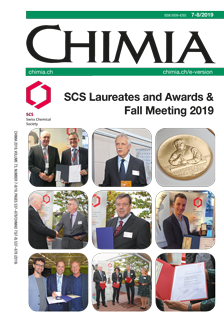Derivation of Rapamycin: Adventures in Natural Product Chemistry
DOI:
https://doi.org/10.2533/chimia.2019.581PMID:
31431218Keywords:
Everolimus, Natural products, RapamycinAbstract
The macrolide rapamycin ( 1 ) was first described as an antifungal agent in 1975. Even though its biological target and the molecular details were yet to be discovered, rapamycin attracted our interest in the early 90s based on its reported immunosuppressive activity in transplantation models and based on findings that its mechanism of action was different from those of the known immunosuppressive agents ciclosporin and FK506. In this review we describe our efforts to chemically modify this complex and chemically very sensitive natural product. Despite the limitations regarding the reaction conditions compatible with rapamycin we discovered ways of selectively modifying specific functional groups. This allowed us, among others, to improve the stability of the parent molecule towards ring-opening. Our efforts culminated in the discovery and development of the 40-O-alkylated derivative everolimus 2 which became a useful drug in solid organ transplantation, in various cancer indications and as the active principle of the market leading drug-eluting stent.Downloads
Published
2019-08-21
Issue
Section
Scientific Articles
License
Copyright (c) 2019 Swiss Chemical Society

This work is licensed under a Creative Commons Attribution-NonCommercial 4.0 International License.
How to Cite
[1]
S. Cottens, J. Kallen, W. Schuler, R. Sedrani, Chimia 2019, 73, 581, DOI: 10.2533/chimia.2019.581.







